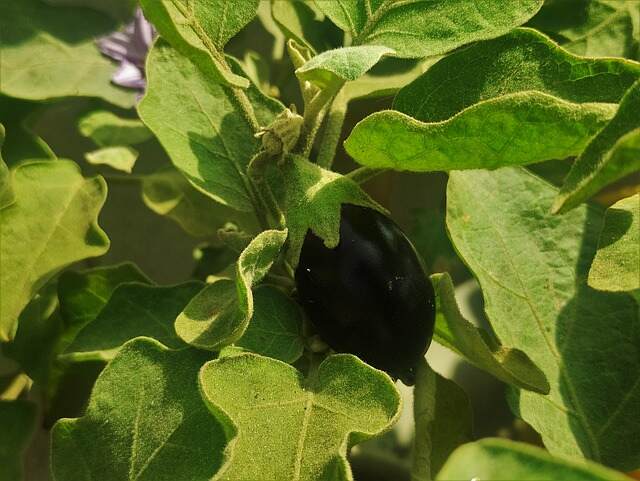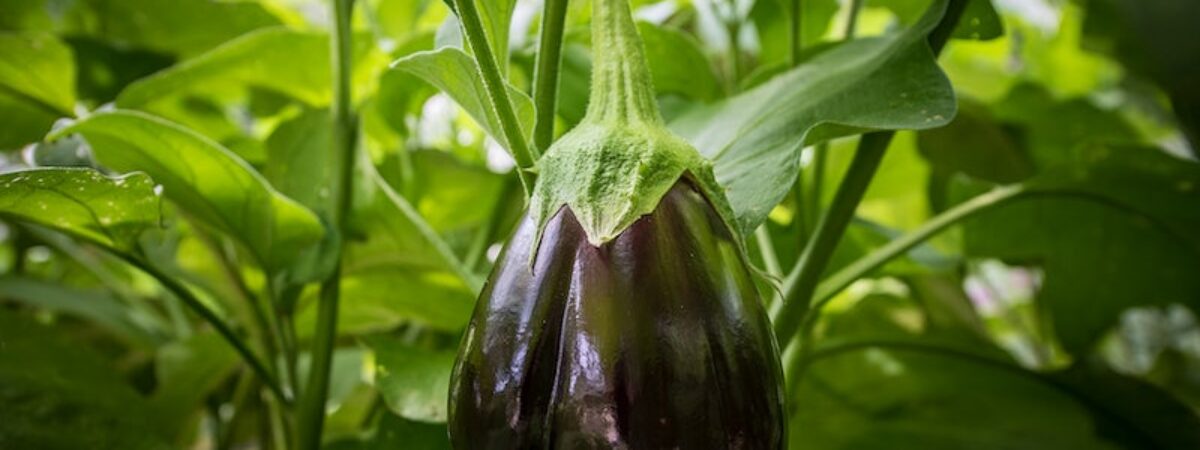The brinjal plant or popularly named the eggplant is one of the most widely grown vegetables in all subcontinents of the earth.
This vegetable is prone to massive attacks by several species of fungi and bacteria that may cause wilt, soft rot, and root rot because of the increasing restriction in the use of chemical fungicides.
So if you are wondering about the brinjal plant diseases and is controlling measures, then you are at the right place.
So let’s dive into the article below to find out some of the major diseases that are seen in the brinjal plants and its controlling measures.

Major diseases and its controlling measures
Blossom end rot
Blossom end rot is a diseased condition in brinjal plant in which the small water-soaked area on end of fruit where the blossom was occurring on unripe fruit, its lesion enlarges and turns sunken, black and leathery in appearance.
This disease is caused by physical disorders caused by low calcium concentration in fruit that may result from competition from other competitive ions in soil e.g. potassium.
Apart from that drought stress, fluctuations in soil moisture or application of excessive amounts of nitrogen fertilizer that promotes rapid vegetative growth may cause this disease.
Controlling measures
To control this disease, maintain soil pH at 6.5 and use lime soil to increase the concentration of calcium in soil and decrease the competition with other ions. If the disease is caused due to drought stress, mulch the soil to reduce it.
Avoid using ammonium fertilisers in the soil as they may increase competition with calcium by increasing ammonium ions in soil. Rather, it is recommended to use nitrate and avoid over fertilizing.
Cercospora leaf spot
Cercospora leaf spot is one of the most dangerous diseases in brinjal plants whose symptoms may first appear first on the lower part of the plant and move upwards.
Initial symptoms of this disease are small circular or oval chlorotic spots on leaves that may develop into the light to dark brown centres. As the lesions expand over time, they may develop concentric zones.
severely infested leaves of the plant may dry out and curl then drop off from the plant. It is generally caused by the fungus that can survive over winter on crop debris in the soil.
Controlling measures
To control this disease, Irrigate your plants in the morning to allow plenty of time for plants to dry out during the day. It is recommended to irrigate at the base of the plant to avoid leaf wetness.
Apart from that, you can use adequate plant spacings to decrease humidity in the plant canopy. Apply appropriate protective fungicides to protect these plants from disease.
Phomopsis fruit rot
Phomopsis fruit rot is a disease in the brinjal plant that may show the symptoms of circular brown spots with lighter centers on fruits.
infested leaves may turn yellow gradually and drop from plant over time.
Dark cankers may form on the stems and symptoms on fruit begin as pale sunken areas that are oval. Gradually, these area grow bigger and become depressed. The lesions may coalesce to cover all or most of the fruit of the plant.
The disease is mainly caused by the fungus that may survive in crop debris in the soil. This disease is mainly favored by hot, humid weather conditions. Fungus primarily spreads by splashing water.
Controlling measures
To control the disease, destroy the infected plant material to reduce levels of inoculum. It is recommended to plant only disease-free seeds and clean transplants. You can also apply appropriate fungicides to control the disease.
Infection by Aphids

Sometimes, the plant may be infested by small soft-bodied insects on the underside of leaves and/or at the end of the plant. The aphids are usually green in color but may be pink, brown, red, or black depending on the species and host plant.
If aphid infestation is heavy it may cause leaves to turn yellow and/or be distorted. Necrotic spots can be seen on leaves and/or stunted shoots.
Sometimes the aphids may secrete a sticky, sugary substance called honeydew that encourages the growth of sooty mold on the plants.
The aphids can be distinguished by the presence of cornicles which project backwards from the insect’s body. Aphids will generally not move very quickly when they are disturbed. They may also transmit plant viruses to the plant when they feed.
Controlling measures
If the population of aphids is limited to just a few leaves or shoots then the infestation can be pruned out to provide control. In order to do that, check transplants for aphids before planting and use tolerant varieties if available .
Use reflective mulches like silver colored plastic that can deter aphids from feeding on plants; sturdy plants aldo can be sprayed with a strong jet of water to knock aphids out from the leaves.
If the infestation is too high, you can also use insecticides to treat aphids. However plants generally tolerate low and medium level infestation; high infestation may kill the plant.
Use insecticidal soaps or oils such as neem or canola oil to control the disease. It is suggested to always check the labels of the products for specific usage guidelines prior to use.
Damping off
Damping off is a serious disease that can be seen in brinjal seedlings and mainly occurs in nursery bed. The disease infected plants rot at ground level and then the plants fall over ground.
The plant may die in patches. Both the pre-emergence and post-emergence damping-off symptoms can be seen in diseased state.
The germinating seeds are generally infected by fungi at the initial stages. The infection spreads to hypocotyls basal stem and developing roots later.
The post-emergence damping off phase can be characterized by infection of the young, the juvenile tissues of the collar at the ground level. The affected plants become pale green over time and brownish lesions are found at the collar region that may resulting in bottling and topple over of seedlings.
Controlling measures
To control this disease over-watering. Drench the beds with Capton or Thiram at 0.4% for 5-7 days after germination
It is also suggested to fumigate the soil with Formalin (7%) by drenching 10-15 cm deep soil. Besides, you can give hot water treatment to seeds at 52°C for 30 min.
Treat the seeds with Captan or Thiram at 3 g per kg from the beginning. Treat the seed bed with Formalin before sowing seeds. You can also spray fungicides on the seedlings in the nursery at regular intervals.
Conclusion

As you read the article this far, you might have gotten the idea of several brinjal plant diseases and their controlling measures.
Now you can surely detect the disease on your own all by yourself and take the necessary steps to protect your plant.
You may also like to read
Blossom-End Rot in Tomatoes – Causes and Prevention
How to get rid of whiteflies on outdoor plants? – An effective way






